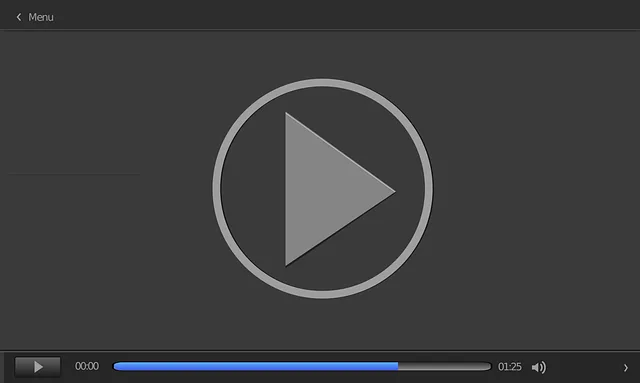DivX compression is a cutting-edge video coding technology that delivers superior image quality at remarkably low bitrates. It employs sophisticated algorithms to minimize data redundancy while preserving critical visual elements, resulting in significantly smaller file sizes without compromising clarity or detail. This technology leverages motion compensation and discrete cosine transform (DCT) techniques for efficient compression, ensuring high-quality video in compact file sizes. Ideal for streaming, device storage, and digital media distribution, DivX compression offers advanced encoding algorithms that balance visual fidelity with reduced file sizes, making it a top choice for content creators and users seeking high-definition multimedia experiences without bandwidth or storage constraints.
Discover the power of DivX compression—a game-changer in image quality. This technology offers exceptional visuals even at low bitrates, making it a popular choice for various applications. In this article, we’ll explore what DivX compression is and how it delivers outstanding results. From its key features to implementation tools, we’ll dive into the science behind its success and why it’s often preferred over other formats. Understand why DivX is a versatile and efficient solution for image encoding.
Understanding DivX Compression: A Brief Overview

DivX compression is a video coding technology that has gained significant popularity for its ability to offer exceptional image quality at remarkably low bitrates. Unlike traditional video formats, DivX employs advanced algorithms to minimize data redundancy while preserving critical visual elements, resulting in smaller file sizes without sacrificing clarity and detail.
This innovative approach leverages motion compensation and discrete cosine transform (DCT) techniques to efficiently compress video data. By predicting and tracking the movement of pixels across frames, DivX reduces the amount of information needed to represent the content. The DCT further enhances compression by converting spatial domain pixel values into frequency components, allowing for more effective removal of redundant or less perceptually significant details. This process ensures that only essential data is retained, ultimately achieving high-quality video in much smaller file sizes.
Key Features and Benefits of DivX for Image Quality

DivX compression is a game-changer in video and image storage, offering exceptional quality even at low bitrates. Its key feature lies in its advanced encoding algorithm, which intelligently compresses data while preserving intricate details. This means viewers can enjoy sharp images and smooth videos without noticeable loss of clarity, making it ideal for streaming or saving space on devices with limited storage.
The benefits extend beyond visual fidelity. DivX’s efficient compression reduces file sizes significantly, allowing for faster uploads and downloads. This is particularly advantageous for online content creators and users who want to share high-quality media without burdening their internet connections. Moreover, its compatibility with a wide range of devices ensures that the images or videos encoded in DivX can be accessed and enjoyed by folks using different platforms and hardware configurations.
How Does DivX Achieve High Quality at Low Bitrates?

DivX Compression is a video encoding technology renowned for delivering high-quality videos while maintaining relatively low bitrates. Its ability to achieve this is attributed to several innovative techniques. Firstly, DivX leverages advanced prediction methods that minimize redundancy in the video signal, reducing the amount of data needed to represent it accurately. This process involves sophisticated motion estimation and compensation, ensuring that only the necessary changes between frames are encoded.
Secondly, DivX employs efficient quantization algorithms that strike a delicate balance between preserving detail and minimizing file size. By carefully adjusting the quantization parameters, DivX can retain crucial visual information while significantly reducing bitrate. Furthermore, it utilizes entropy encoding to further compress the data, assigning shorter codes to commonly occurring data patterns, thereby enhancing overall compression efficiency.
Use Cases: Ideal Scenarios for DivX Compression

DivX compression is a powerful tool that offers exceptional image quality at low bitrates, making it ideal for various use cases. One of its most common applications is in video streaming and digital media distribution. With DivX, content creators can significantly reduce file sizes while maintaining high-definition visuals, ensuring efficient storage and faster download times for viewers. This technology is particularly beneficial for online platforms, allowing them to deliver rich multimedia experiences without overburdening bandwidth.
Another ideal scenario for DivX compression is in digital archiving and backup solutions. It enables the preservation of media assets with minimal loss in quality, even at reduced bitrates. This is crucial for organizations dealing with vast amounts of visual data, as it facilitates efficient storage management and easy retrieval of high-resolution content when needed. Moreover, its ability to compress without significant quality degradation makes DivX a preferred choice for professionals in fields like film editing, animation, and video production.
Comparison with Other Formats: Why Choose DivX?

DivX compression stands out for its ability to offer exceptional image quality even at low bitrates, making it a preferred choice in video encoding. When compared to other formats, DivX excels in maintaining sharp details and minimal loss of visual fidelity, particularly at lower resolutions or when streaming over limited bandwidth. This is achieved through advanced compression algorithms that intelligently analyze and reduce data redundancy without sacrificing too much quality.
Choosing DivX offers several advantages. It’s a widely supported format, ensuring compatibility across various devices and platforms. Additionally, DivX files are typically smaller in size than alternatives, facilitating faster downloads and smoother streaming experiences. This makes it an ideal solution for online video distribution, mobile devices, and other scenarios where storage space or bandwidth is limited. Moreover, DivX’s focus on quality preservation ensures that videos maintain their original look and feel, enhancing the overall viewing experience.
Implementation and Tools for DivX Compression

DivX compression is a video encoding technology renowned for its ability to deliver high-quality videos in smaller file sizes, making it ideal for streaming and downloading. This efficient compression method is implemented through specialized tools that utilize advanced algorithms to reduce video data while minimizing artifacts and quality loss.
The process involves several steps, including encoding, where the original video is converted into a DivX format, and subsequent bitrate reduction, allowing for smaller file sizes. These tools often offer customizable settings, enabling users to balance between file size and video quality according to their needs. This versatility makes DivX compression a popular choice for content creators and consumers seeking optimal video playback experiences without sacrificing storage space.
DivX compression stands out as a powerful tool for achieving exceptional image quality at remarkably low bitrates. By leveraging innovative techniques, DivX enables efficient data reduction without sacrificing visual fidelity. Whether for streaming, archival, or content distribution purposes, DivX offers ideal solutions across various use cases. Compared to other formats, its superior performance and versatility make it a compelling choice for those seeking optimal image quality in compact file sizes. With readily available implementation tools, adopting DivX compression is more accessible than ever, empowering users to maximize the impact of their visual content.
